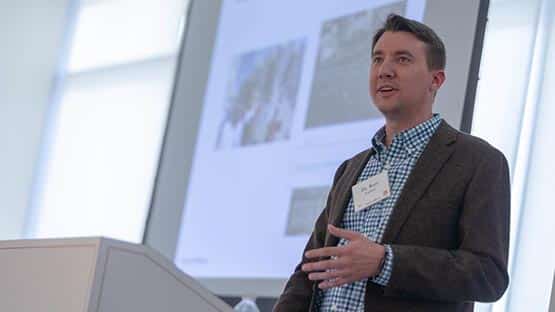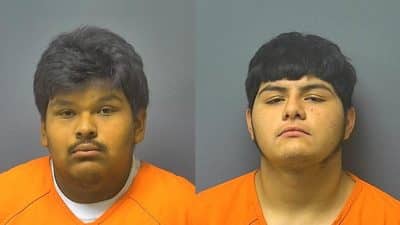
A group of researchers from Virginia Tech studied the crowdsourced investigation that followed the Jan. 6, 2021, insurrection at the U.S. Capitol.
Their question: Has online sleuthing replaced wanted posters?
“These online communities can provide real value, if they’re organized in the right way,” said Kurt Luther, associate professor of computer science and history. “These aren’t just digital witch hunts now that make false identifications. They can really make solid contributions to ongoing investigations by getting images in front of people, which is ultimately what law enforcement has been trying to do since those wanted posters 200 years ago.”
Led by Tianjiao “Joey” Yu, a Ph.D. student Luther co-advises, the group analyzed the online community Sedition Hunters to understand how the group used Twitter to identify suspects who took part in the insurrection.
Yu presented the resulting paper, “Sedition Hunters: A Quantitative Study of the Crowdsourced Investigation into the 2021 U.S. Capitol Attack,” at the ACM Web Conference on May 2 in Austin, Texas.
“Oftentimes I don’t see clearly the real-life applications of my research,” said Yu, whose research interests include crowd intelligence, natural language processing and linguistics. “But with this, I feel like I’m really solving a problem, and I’m really making a contribution.”
Yu and Luther collaborated on the project with Ismini Lourentzou, assistant professor of computer science, and Sukrit Venkatagiri, a postdoctoral researcher at the University of Washington.
The research team found the Sedition Hunters generally adhered to ethical investigative guidelines, successfully mined large troves of data to create composite images and used creative nicknames as hashtags to collectively refer to unidentified people of interest and reach a broader audience on Twitter.
“They really focused on what they could do that was helpful and not harmful, and I think that’s one of the reasons they’ve been able to sustain it for more than two years,” Luther said.
Supported by a National Science Foundation grant, Luther began to study the use of crowdsourcing in active investigations in 2017. He said the events of Jan. 6, 2021, provided a unique situation to study.
“It was the most heavily documented crime in history, according to Time magazine,” Luther said. “It’s kind of this perfect storm of this significant event happening and this massive amount of documented evidence in photos and videos online that’s being publicly shared, so it creates this opportunity for people who want to help law enforcement to be able to contribute.”
Luther said a key element of the community’s success was law enforcement’s interest in its discoveries.
“They seem to be very receptive of what the community can offer,” Luther said.
According to the team’s research, the Sedition Hunters account has more than 66,000 followers who produced more than 320,000 tweets with more than 1 million retweets between Jan. 12, 2021, and Jan. 12, 2022. Despite the large audience, the community’s content is dominated by a small number of highly influential accounts. The majority of tweets requested other users to share content or shared information related to news or recent events.
The research team found that, early on, the Sedition Hunters ran into an issue when some Twitter users falsely identified an individual in a tweet. Luther said he was impressed how quickly a few influential users were able to largely change that behavior.
“They said, ‘Hey, no more naming suspects publicly. If you think you know who it is, send it to the FBI,’” Luther said. “And to a large extent, that’s what the community did. The community evolved.”
The Sedition Hunters went on to develop pseudonyms for unidentified suspects, which they used as searchable hashtags. Luther credits the community’s creativity, using humor to developing names such as #LittleRedRioter and #SlimMcTreason, as part of the reason the effort was successful.
He also said he was surprised at the community’s ability to locate and use open-source camera footage to create composite pictures of suspects. This helped to overcome barriers in the first images collected, such as wanted individuals wearing masks or being captured at useable angles.
Though overwhelmingly positive, Yu said he did see areas for future improvements. They include being more centralized, finding a better way to track the progress of each investigation and more behavioral oversight within the group.
Overall, Luther said the Sedition Hunters have shown they have the potential to greatly benefit law enforcement and society in general.
“This paper offers a lot of promise for how law enforcement and the public can work together,” Luther said. “Officials are getting a more diverse section of the population to see suspects and ultimately help solve crimes in an ethical and more effective way.”










